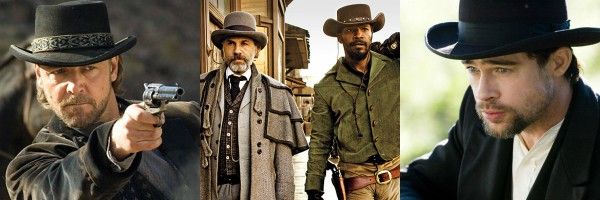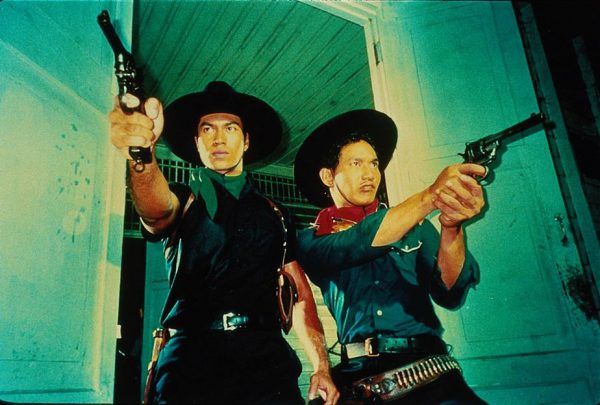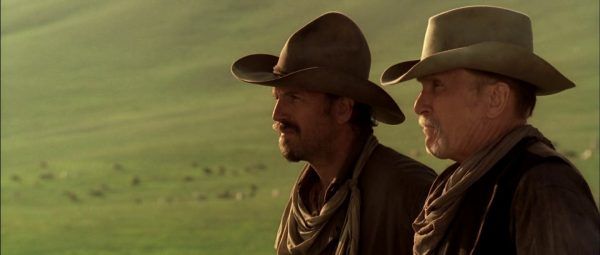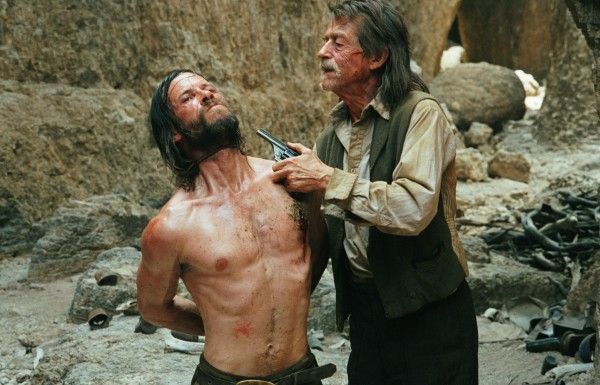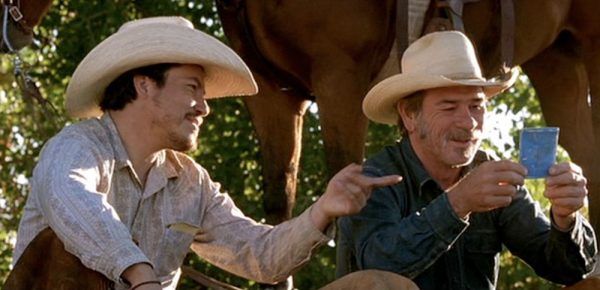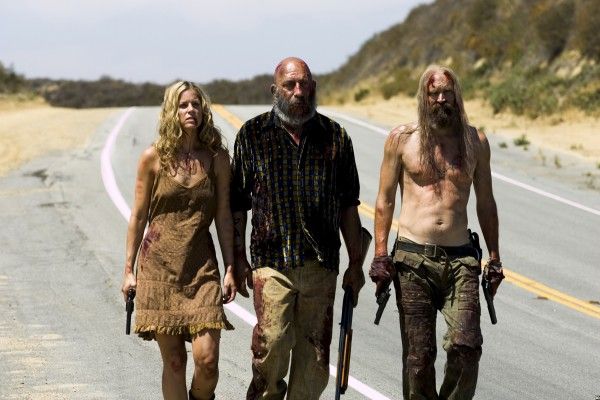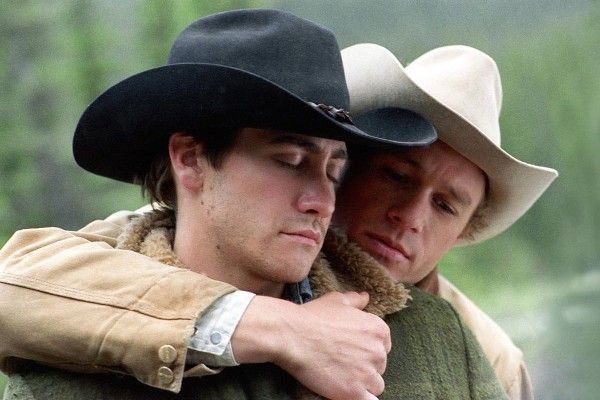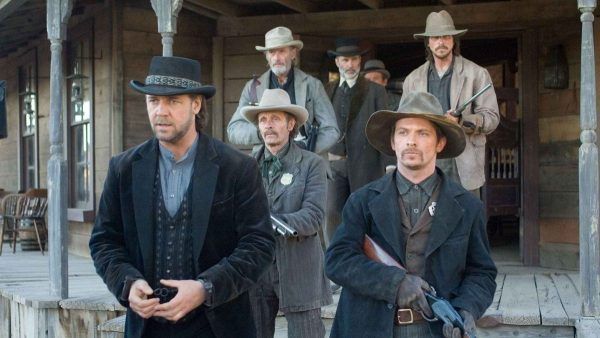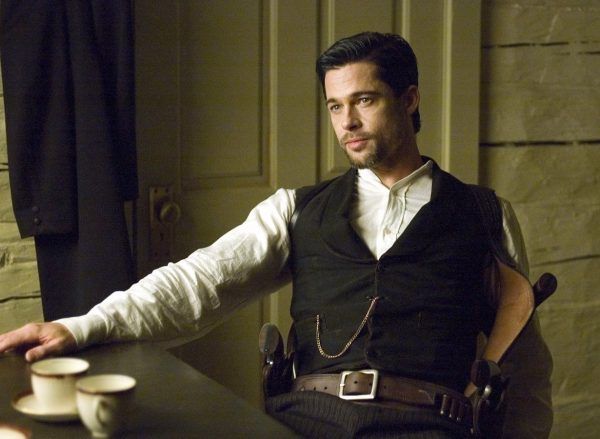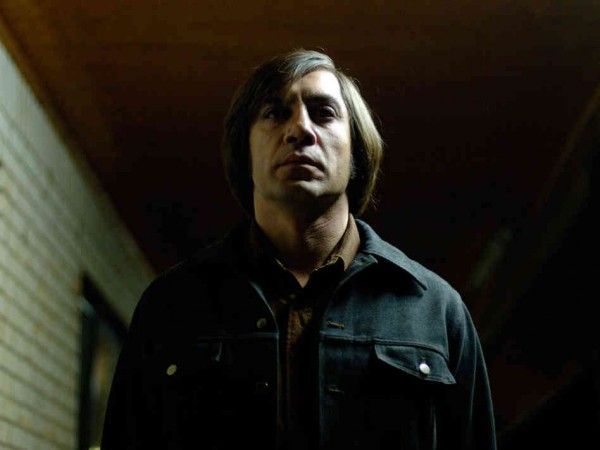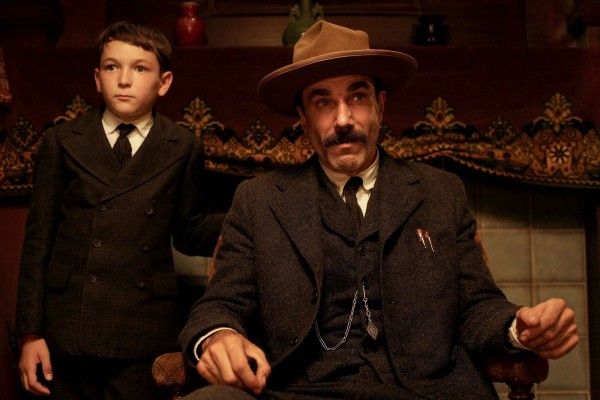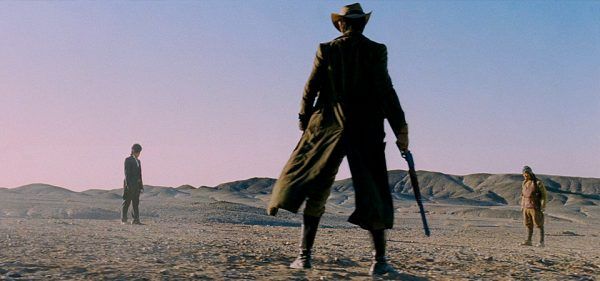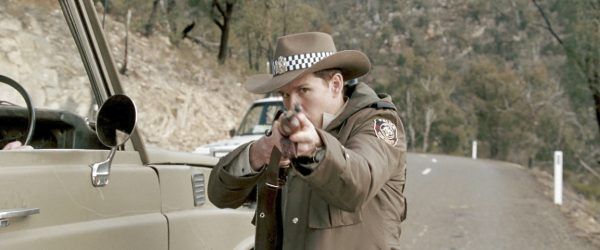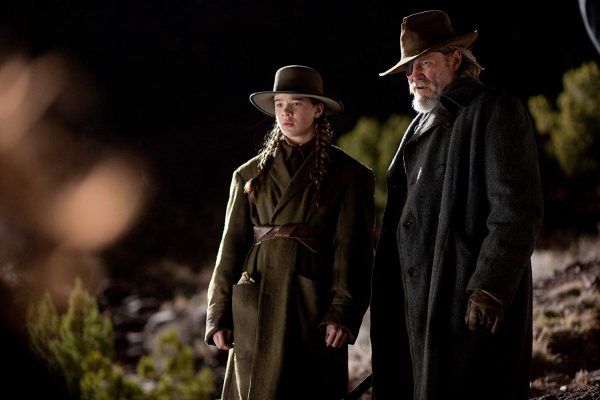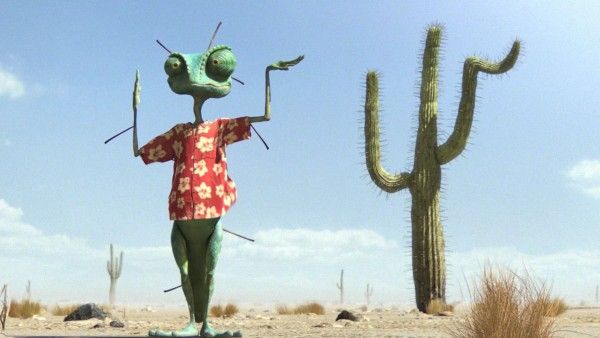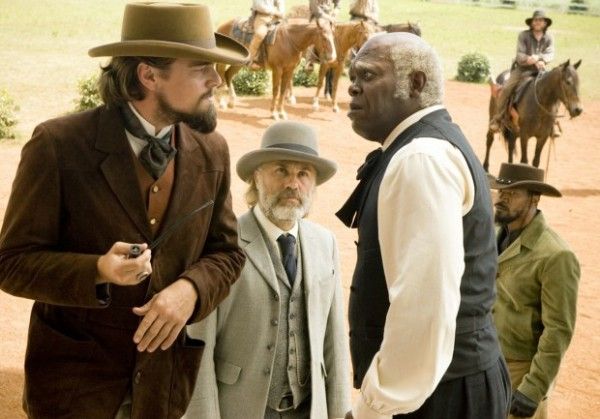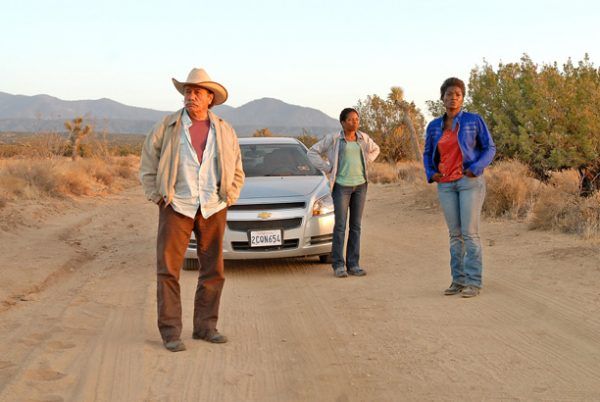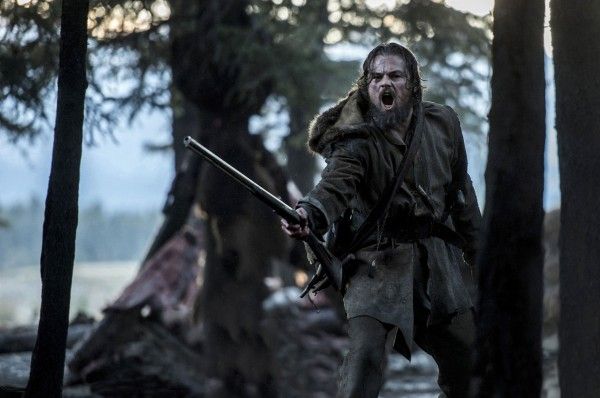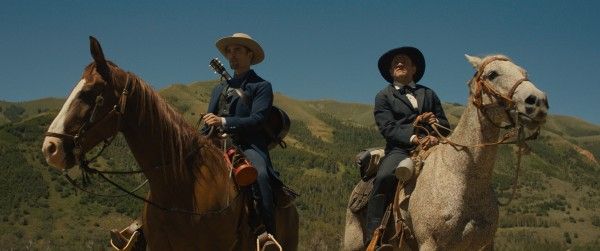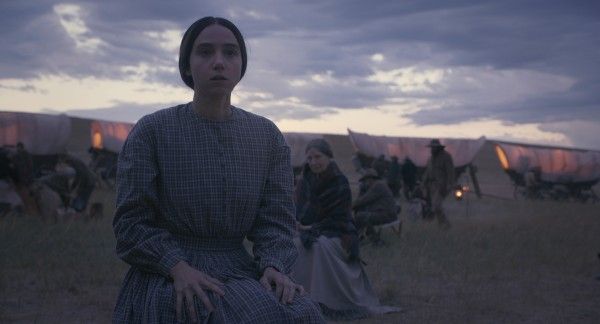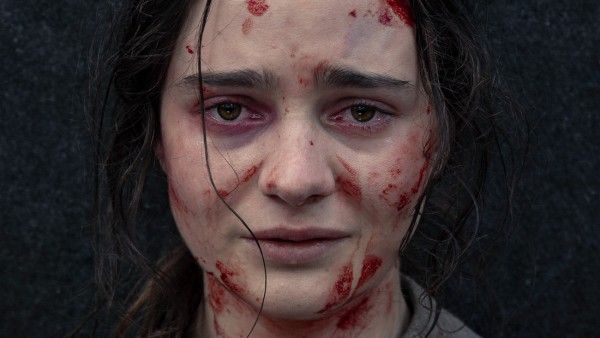It’s been said on more than one occasion that the western movie genre, which was for decades a regular staple and major box office draw, is dead. But if that’s true then nobody told the actual westerns, because although we may not get as many of them as we used to, they’re still being produced every single year.
What is a western? It’s not just deserts and horses and cowboy hats. The western movie genre takes place on the far edge of society, along the frontier, where law and order is often tenuous and tales are often told in broad, archetypal strokes. Violence - though not necessarily a necessity - could break out at any moment. Manifest destiny, moral compromise, vengeance, racism, and sexism are frequently explored in the western genre.
But beyond that, the western is a highly fluid subgenre. Just these last two decades alone we’ve had classic westerns that also work as action movies, thrillers, romances, comedies, horror films, the list goes on an on.
So as we explore our picks for the best western movies of the 21st century, we took variety into consideration. There may be filmmakers and actors who appear multiple times but the films themselves represent a cavalcade of western subgenres, ideologies, and styles. There’s something for everyone in the Old West nowadays.
So what are we waiting for? Let’s ride!
Tears of the Black Tiger (2000)
It took years for the first great western of the 21st century to finally arrive in the west, but after Wisit Sasanatieng’s Tears of the Black Tiger was picked up, re-edited, given away and unedited, it finally premiered in America in 2007 in all of its nostalgic glory. The film stars Chartchai Ngamsan as Dum, a poor man in love with a wealthy woman, Rumpoey, played by Stella Malucchi. Fate has other plans, and Dum becomes a notorious outlaw, to be apprehended by the man Rompoey is supposed to marry.
Sasanatieng’s skillfully balances 1930s-style western bravado with colorful 1950s melodrama, giving Tears of the Black Tiger a bizarre but fascinating visual aesthetic and emotional tone that’s unlike any other western you’ll find this century. And maybe any other!
Open Range (2003)
Kevin Costner won an Oscar for the first western he directed, Dances With Wolves, but his long-awaited return to the genre is even more skillful and satisfying. Open Range stars Costner and Robert Duvall as cowboys who drive their cattle across - as you may have surmised - the open range, to the consternation of a local rancher, played by Michael Gambon. Tensions flare as both sides make life nearly impossible for one another, until it all culminates in a humdinger of a showdown.
On-screen, Costner has rarely been better. Behind the camera he’s never been better; the rich characters and mounting tension are completely captivating.
The Proposition (2005)
The first Australian western to make the list, but hardly the list, comes courtesy of director John Hillcoat (The Road) and screenwriter Nick Cave, the frontman of Nick Cave and the Bad Seeds. The Proposition is just as poetic and painful as you’d expect coming from those two storytellers. Guy Pearce stars as Charlie Burns, one of the notorious Burns Brothers, who is captured along with his younger brother Mikey (Richard Wilson), and ordered to track down and kill his older brother, Arthur (Danny Huston), or his younger brother will be hanged.
The Proposition is a film of extreme violence and moral paradox. Violence can only be quelled with more violence, and the peace the lawmen seek can only be achieved by murdering anyone wicked enough to murder. The whole film feels trapped in a distant corner of Hell, where the vile survive - for a while - to make life harder for everyone else.
The Three Burials of Melquiades Estrada (2005)
Oscar-winning actor Tommy Lee Jones made his directorial debut with an astoundingly soulful, pointed western about dehumanization along the southern border. Set in the present day, Jones stars as Pete Perkins a rancher whose friend and co-worker, Melquiades Estrada (Julio Cedillo), an undocumented worker, who has been murdered by a border patrol agent, Mike Norton (Barry Pepper), who buried the body and got away with it. When Perkins finds out Norton was responsible he kidnaps the border patrol agent at gunpoint and forces him to dig up Estrada and carry him back across the border so he can be treated, finally, with the respect he deserves.
The Three Burials of Melquiades Estrada is an exceptionally moral movie, justifying all of Perkins’ actions no matter how much they make him an outlaw, and outwardly condemning racism, xenophobia, and American border policy. It refuses to see even one person’s death as a statistic and moves heaven and earth to humanize Estrada, and shed light on injustice. To call it “preachy” isn’t an insult; Jones’s film is practically a sermon, and it hits you right in your soul.
The Devil’s Rejects (2005)
Rob Zombie surprised audiences with the sequel to his outlandish horror hit House of 1,000 Corpses. Not only was the follow-up better than the original, in every conceivable way, but it also completely changed genres. What began as a hallucinogenic riff on The Texas Chain Saw Massacre had become, instead, an amoral western, in which a whole family of psychopaths were now our heroes.
Following the events of Corpses, The Devil’s Rejects finds the Firefly Family on the run, killing their way across the desert and fleeing a sheriff whose lust for revenge is gradually corrupting him. Sid Haig, Bill Mosley, and Sheri Moon Zombie take center stage as oddly charismatic rejects, but it’s William Forsyth as the increasingly enraged Sheriff Wydell who steals much of the film, as a “hero” (of sorts) who might just be crazy enough to take down the craziest killers the world has ever seen. It’s twisted, it’s ultraviolent, and it’s grotesquely fascinating.
Brokeback Mountain (2005)
Beautiful, romantic, breathtakingly tragic, Ang Lee’s Brokeback Mountain subverted all expectations of the western genre to tell a timeless love story between two men whose lives become thoroughly linked. Their pastoral, passionate romance begins when Ennis Del Mar (Heath Ledger) and Jack Twist (Jake Gyllenhaal) are hired to tend sheep together, but in the off-season their lives are expected to continue, as heterosexuals, and utterly lonely.
Ang Lee films Brokeback Mountain as sweetly as any iconic romance, leaving the heaviest lifting to the understated, Oscar-winning screenplay and to his astounding ensemble. Ledger and Gyllenhaal have rarely been better, and Anne Hathaway and Michelle Williams shine in supporting roles as Ennis and Jack’s wives. The film seems to constantly be searching for that which goes unsaid: the romance was real, but the feelings seem to confuse everybody involved, who are all just doing their best to find happiness in a time and place where honesty hardly seemed possible.
3:10 to Yuma (2007)
Years before James Mangold turned Logan into a dystopian western riff, he gave an old-fashioned western a try and proved he understood the genre as well as anybody. 3:10 to Yuma, a remake of a 1957 Delmer Daves classic - and both of them based on a short story by the great Elmore Leonard - stars Christian Bale as Dan Evans, a cowboy who, in need of money, agrees to escort the dangerous outlaw Ben Wade, played by Russell Crowe, to a train station to take him to prison.
It sounds simple, but of course, their journey is fraught with perils and Bale and Crowe form an unlikely friendship, of a sort, that keeps them alive but complicates the story… especially when the people shooting at Bale are Crowe’s own men. Bale and Crowe are wonderful together, forming a wholly believable bond, and Ben Foster plays Wade’s scene-stealing partner, as deadly an adversary as they come. It’s a no-frills western action classic, with a wealth of character and a slew of great shootouts. The kind of pulp period thriller that could make just about anybody fall for the whole danged western genre.
The Assassination of Jesse James by the Coward Robert Ford (2007)
One of the most stunningly photographed movies of the decade, Andrew Dominik’s film is almost as detailed and thorough as its title. The Assassination of Jesse James by the Coward Robert Ford stars Casey Affleck as the title coward, who worms his way into the criminal family of Jesse James (Brad Pitt), in search of acceptance, friendship, and a celebration of his own worth. But as time goes by, Ford never quite finds what he’s looking for, and eventually, the idea of being the man who killed Jesse James seems a little more legendary than just being a part of his gang.
Dominik’s film is nearly three hours long, and it feels it, but The Assassination of Jesse James by the Coward Robert Ford is about the moments of contemplation because the acts of criminality, and the little indignities that pile up over time and eventually knock everything over. It is a pensive, luxurious, intelligent western epic, and every frame of it - courtesy of iconic director of photography Roger Deakins (Blade Runner 2049) tells its own story, and looks suitable for framing.
No Country for Old Men (2007)
A modern amorality tale, a neo-western in the classic mold, No Country for Old Men felt timeless immediately upon its release, and time has only solidified its claim to classic status. Based on a crime novel by Cormac McCarthy, the film stars Josh Brolin as Llewelyn Moss, a quiet poacher who stumbles across a violent crime scene in the desert and stops to pick up a suitcase full of money. But it’s not the perfect crime: an angel of death known as Anton Chigurh (Javier Bardem) is hot on his trail, and with a cattle gun by his side, he metes out death to everyone in his way… unless they can call a coin toss.
Fair is, to one extent or another, fair. But figuring out what’s fair and what’s just callous, hollow violence is tricky in No Country for Old Men. The players in this deadly game are obeying the rules but they made up their own rules, and not everybody has agreed to the same laws of engagement. It all feels completely simple yet utterly senseless, a grim shade of a noble west that seems like it once was, but was probably always as pointlessly bloody as this captivating, depressing, poignant film.
There Will Be Blood (2007)
The American west was built on blood, sweat, and oil; Paul Thomas Anderson mixed those chemicals and come up with There Will Be Blood, a period epic that lands like a punch to the face. Daniel Day-Lewis plays a greedy oilman whose plans to bilk an entire town out of their natural resource is defied by a local preacher, played by Paul Dano. But this so-called man of God is no saint, and maybe just as wicked as our captivating antihero.
There Will Be Blood, stunningly photographed, with an unforgettable score by Radiohead’s Jonny Greenwood, isn’t interested in the day-to-day crime of the American west. It’s about the biggest swindles of all, and Anderson - loosely adapting a novel by Upton Sinclair - isn’t afraid to accuse capitalism and religion of being in on the grift. It’s bitter, it’s complex, it’s stunning.
The Good, The Bad, The Weird (2008)
Like a spaghetti western with a rocket strapped to its back, Kim Jee-woon’s The Good, The Bad, The Weird is one of the most joyous and frenetic action movies of the 21st century. Like the film that inspired the title, The Good, The Bad and the Ugly, it’s about a series of broad western character types who cross each other, and cross each other’s paths, as they seek a missing treasure. It sounds simple enough, but Kim Jee-Soon won’t settle for that, not at all.
Set in Manchuria in the 1930s, The Good, The Bad, The Weird is a lavish celebration of its influences, while adding modern touches like motorcycles in the midst of what could have been old-fashioned western chase sequences. From the train heist onward, the film is a spectacular example of pure pop entertainment. It owes everything to its influences, and yet also emerges as its own, distinct and wondrous thrill ride.
Red Hill (2010)
Ryan Kwanten (True Blood) stars in another excellent Australian western, as a sheriff’s deputy who moves to a small town and, on his very first day, finds himself in the middle of a killing spree. It seems a local killer has escaped from jail and he’s on his way to exact revenge on the townsfolk that put him there, and the townsfolk are eager to fight back with every weapon in their arsenal. Not that it will do them much good…
Patrick Hughes’s film starts out simple enough, but gradually escalates to a massacre. It’s like High Noon if it was set at Camp Crystal Lake, except everyone in town thinks they can kill Jason Voorhees. Of course, they can’t. Red Hill is a strange but thrilling motion picture, with as much suspense as you can handle and just enough surreality to keep you on your toes.
True Grit (2010)
The Coen Brothers are back for the second time with a remake of a Hollywood classic. True Grit stars Hailee Steinfeld, in her Oscar-nominated motion picture debut, as a young girl whose father is murdered by a despicable outlaw, and who hires a man to kill him. That man is Rooster Cogburn, played with a malleable gruffness by Jeff Bridges. He can sell you on the pain and heartache of the Old West just as easily as he can sell a very dumb joke.
Cogburn doesn’t fit into easy boxes, and neither does True Grit. The film is obviously a western but it's using a familiar movie’s structure to subvert our expectations about the genre and the history it purports to tell. The Coen Bros.’ version of the film is a bloody, silly, dangerous film filled with heroes and villains who disappoint us, but never cease to amaze us.
Rango (2011)
Gore Verbinski’s Oscar-winning animated film Rango stars Johnny Depp as the title character, a pet chameleon who has been living in a cage so long he’s lost his mind, or at least his sense of identity. When he’s thrown from the family car and into the desert, he stumbles into a wild west town full of eccentric varmints and decides to pretend he’s a great gunslinger hero. It works out pretty well until he’s forced to play the part for real.
With odd character design, unexpectedly intense action and a truly bizarre sense of humor - watch out for that golfing scene, it’ll mess with your head - Rango is an extremely unusual motion picture. It’s also a whirlwind of inventive animation and intriguing characters, wrapped up in western trappings. Depp hasn’t been this funny in a very long time, and Verbinski has perhaps never found as ideal an outlet for his particular, brash kind of weirdness.
Django Unchained (2012)
The first western from Quentin Tarantino is a daredevil piece of cinema, using spaghetti western and blaxploitation genre tropes to bring vigilante justice to the American south. Jamie Foxx plays the title character, a slave who becomes a bounty hunter, apprenticing under the charismatic Christoph Waltz. When his skills are honed he’s ready to rescue his wife, played by Kerry Washington, from the vicious clutches of her sadistic “owner,” played by Leonardo DiCaprio.
Django Unchained puts the hatred, racism and brutal exploitation of the era front and center, a sharp but important contrast to the heightened violence of vengeance Django unleashes upon his oppressors. There’s no questioning what parts of the film are unforgivably horrific and which parts are righteous justice. It’s an incredible balancing act, with Waltz and DiCaprio keeping the extremes as fascinating as possible, and with Foxx embodying one of the ultimate western heroes.
Go for Sisters (2013)
John Sayles wrote and directed Lone Star, which is probably the best neo-western ever, but Go For Sisters comes impressively close. The film stars LisaGay Hamilton as Bernice, a parole officer who finds herself in charge of an old childhood friend, Fontayne, played by Yolonda Ross. When Bernice’s son goes missing along the Mexican border, Bernice enlists Fontayne’s help in scouring the underworld, as well as the help of a blind detective played by Edward James Olmos.
They’re an unlikely group, and Sayles knows that his film lives and dies not on the mystery - which make no mistake is suspenseful and satisfying - but on the relationship of these investigators. Hamilton and Ross are perfect together, and Olmos gives one of his very best performances. It’s a western that grows out of a crime movie that grows out of daily life, and frankly, it’s exhilarating to see character-driven cinema fire on every cylinder like this.
The Revenant
One of the most harrowing westerns, The Revenant stars Leonardo DiCaprio as a trapper named Hugh Glass, who was mauled by a bear while fleeing a violent raid by the Arikara. His party decides to leave him for dead and, in the process, kill Glass’s protesting son. But as the title suggests, nothing is going to keep Hugh down now, as he rises from the grave and weathers unbelievable environments to find his betrayers and destroy them.
Alejandro González Iñárritu won an Academy Award for his visceral direction, which consists of unbelievable one-take action, gorgeous vistas and sterling performances by DiCaprio and Tom Hardy, as the bastard responsible for all that transpires. Hardy’s monologue about God is a career highlight, and it provides the perfect counterpoint in a story about persevering over impossible odds, to the extent that it’s practically biblical.
Damsel
Robert Pattinson has a gun, a guitar and a miniature horse in David and Nathan Zellner’s Damsel, and he’s hired a priest to accompany him on his journey to find his true love, Penelope (Mia Wasikowska), rescue her from her kidnapper, and marry her on the spot. Pattinson, always a fascinating actor, relishes his cheerful hero role, and sets us on an adventure in the quirky Wes Anderson mold.
But that’s not what Damsel is about. To say much more would be telling, but suffice it to say that we’ve had so many revisionist westerns over the last half-century that those revisions have become the norm. A film like Damsel subversively rewrites the history of the west and the western genre, making it funnier, crueler and probably more accurate. Pattinson steals his scenes but Wasikowska runs away with the film, in a role that combines tragedy and comedy in unlikely, incredible ways.
The Ballad of Buster Scruggs (2018)
The third brilliant Coen Bros. western this century proves that, after two stabs at the genre, the filmmakers still had a wealth of ideas left to explore in the old west. The Ballad of Buster Scruggs is an anthology film, telling a series of stories - some funny, some sad - about homicidal singing cowboys, ill-fated bank robbers, lonesome prospectors, melancholy thespians, frightened pioneers and mismatched carriage passengers in the old west.
What connects these bizarre tales? Pay attention to the last one and you might find a clue. The Ballad of Buster Scruggs isn’t as random as it seems, and each of its tales revolve around a specific, inescapable theme. You could even argue that the short films in Buster Scruggs represent a microcosm of the Coens’ own oeuvre, which when viewed together form a sharp relief of their underlying stylistic sensibilities and existential hangups. It’s every kind of western at once, and a tidy, intriguing summation of the filmmakers’ life’s work.
The Nightingale (2019)
So brutal it’s practically appalling, Jennifer Kent’s Australian western The Nightingale stars Aisling Franciosi as Clare, a prisoner kept long past her sentence by the corrupt, vile Lieutenant Hawkins (Sam Claflin). When Clare’s husband gets in the way of Hawkins’ promotion, his retaliation is unforgettably, unforgivably horrifying, and leaves Clare in a catatonic state. When she emerges, Hawkins has left, and the only way to track him down - and kill him - is to enlist a local guide, Billy (Baykali Ganambarr).
After The Babadook it should come as no surprise that Kent is a master at filming emotional trauma, but The Nightingale goes beyond. The journey of Clare and Billy is one of grand significance, as they gradually come to realize that - despite their differences - they each carry similar pain, and suffer similar indignities. Franciosi and Ganambarr are revelations here, and Claflin is all-too plausibly horrifying as a misogynistic, racist beast who uses what little power and influence he has to make the poorer, weaker, less educated men around him just as cruel as he is.

